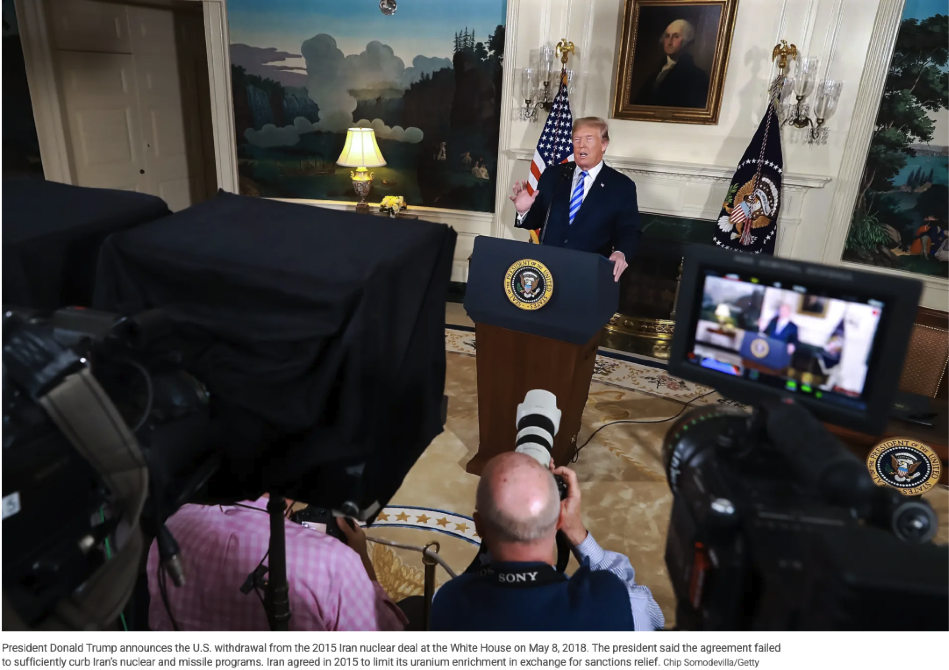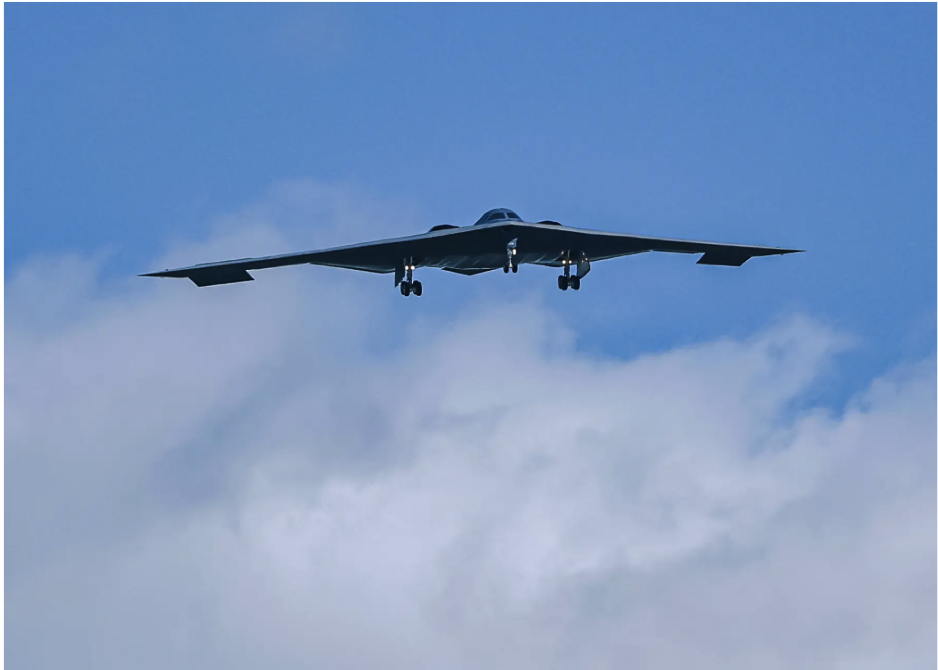
Inside the Secret Mission That Took Down Iran’s Nuclear Facilities
I am an annual subscriber to The Epoch Times, and it is money well spent.
In addition, they conduct cutting-edge news analysis, feature timely video interviews, and produce well-documented infographic news stories.
This one is well worth reading.
Inside the Secret Mission That Took Down Iran’s Nuclear Plants
By Ryan Morgan
 Click Here or Above For An Expandable Image Of The Infographic
Click Here or Above For An Expandable Image Of The Infographic
President Donald Trump’s decision to order an around-the-world stealth bomber strike on Iran was a turning point in a multi-decade standoff over Iran’s nuclear program.
“Our objective was the destruction of Iran’s nuclear enrichment capacity and a stop to the nuclear threat posed by the world’s No. 1 state sponsor [of terrorism]. Tonight, I can report to the world that the strikes were a spectacular military success,” Trump said in a June 21 televised statement shortly after the strike.
Iran has developed its nuclear energy program since the 1950s and became a signatory to the Nuclear Non-Proliferation Treaty in 1970, under the leadership of Shah Mohammad Reza Pahlavi. While the Non-Proliferation Treaty requires non-nuclear weapons states not to pursue such arms, Iran’s commitment to these obligations has been the subject of international concern following the 1979 Iranian revolution, in which the Shah was ousted and Iran became an Islamic republic under the leadership of its Shia clergy.
In 2003, as the United States invaded neighboring Iraq and searched for possible weapons of mass destruction therein, Iranian leader Ali Khamenei asserted that Iran would not pursue nuclear weapons. While Iran continued to disavow a nuclear weapons program, the International Atomic Energy Agency found indications Iran had worked on such a program between the late 1980s and 2003.
The Israeli government asserts that Iran has continued to pursue a nuclear weapons program in secret in the years since 2003, while the U.S. intelligence community has provided a more ambiguous assessment.
While the U.S. intelligence community has stopped short of declaring that Iran is pursuing nuclear weapons, the U.S. military has spent years preparing to snuff out Iran’s nuclear program.
At a June 26 press briefing, Chairman of the Joint Chiefs of Staff Gen. Dan Caine revealed that in 2009, the U.S. military tasked two members of the Defense Threat Reduction Agency with heading up a program to study a way to strike Iran’s underground uranium enrichment facility at Fordow. Caine revealed that this program heavily influenced the development of the GBU-57 Massive Ordnance Penetrator, a 30,000-pound bunker buster bomb.
The June 21 U.S. strike on Iran was the culmination of 15 years of planning and preparation, Caine said.

The Iran Nuclear Deal
The international community has raised sanctions against Iran, amid mixed assessments of its nuclear pursuits.
In April 2015, following nearly two years of negotiations, Iran signed an agreement with the United States, the UK, France, China, Russia, Germany, and the European Union to limit its uranium enrichment in exchange for sanctions relief. The accord was formally known as the Joint Comprehensive Plan of Action.
As Trump ramped up sanctions, Iran began pursuing uranium enrichment levels.
The first Trump administration ended without a new deal with Iran.
Uranium purity of about 90 percent is necessary for a nuclear weapon.
After returning to the White House, Trump resumed calls for a new nuclear deal with Iran. In early April, Trump notified Iran to agree to a deal within 60 days or face potential military action.

‘Day 61’
During five rounds of talks, U.S. and Iranian negotiators remained split over whether Iran could continue to enrich uranium under a new deal.
Speaking with reporters at a June 12 White House event, Trump said Israel could potentially strike Iran, although he “would love to avoid a conflict.”
“As long as I think there will be an agreement, I don’t want [Israel] going in,” he said.
At the time Trump delivered the White House comments, U.S. and Iranian representatives were scheduled to hold a sixth round of talks in Oman on June 15.
In the early morning hours of June 13, Israeli warplanes entered Iranian airspace, beginning a campaign of strikes targeting military and nuclear facilities, top military leaders, and leading nuclear researchers.
Although Trump called on Iran to stick to negotiations following the surprise Israeli attack, Iran pulled out of the June 15 Oman talks and began launching retaliatory missile and drone barrages at Israel.
Stealth Strike
While Israeli aircraft had managed to conduct extensive strikes across Iran following their initial June 13 surprise attack, the underground facility at Fordow remained difficult for their weapons to reach. Calls began to mount for U.S. support in the form of GBU-57 bunker busters.
On June 19, White House press secretary Karoline Leavitt announced that Trump would decide whether the U.S. military should join in striking Iran “within the next two weeks.”
Just after midnight on June 21, seven B-2 Spirit bombers, the only aircraft equipped to deploy GBU-57s, departed Whiteman Air Force Base, in Missouri, heading east toward Iran.

Dubbed Operation Midnight Hammer, the stealth bomber strike entailed a highly coordinated mission with dozens of aerial refueling aircraft supporting the bombers on their journey around the world to strike Iran’s Fordow and Natanz nuclear facilities. The operation also entailed a degree of misdirection, with a separate set of aircraft departing Whiteman Air Force Base and heading west toward the Pacific Ocean as decoys.
As the seven B-2 bombers reached the U.S. Central Command area of operations in the Middle East, they were joined by fighter escorts.
U.S. warships also launched more than two dozen Tomahawk land attack cruise missiles at a third Iranian nuclear facility, Isfahan. The missile launches were carefully timed to land at about the same time the bombers struck Fordow and Natanz.
Fourth- and fifth-generation U.S. fighter jets flew ahead of the B-2 bombers, suppressing Iranian air defenses along the way to the main targets. Six of the bombers dropped 12 GBU-57s on Fordow, while a seventh dropped two more of the heavy bunker busters on Natanz.
As the bombers flew away from Fordow and Natanz, the Tomahawks struck Isfahan.
Following a retaliatory Iranian missile barrage on June 23, which Trump cast as “weak” and largely symbolic, he announced that Israel and Iran had agreed to a phase-in cease-fire, ending what he called the “12-Day War.”
The extent to which Israeli and U.S. strikes set back Iran’s nuclear development remains unclear. On June 26, Iranian Foreign Minister Abbas Araghchi said the damage to the Fordow, Natanz, and Isfahan facilities is “excessive and serious.”
Trump has said he would bomb Iran again if he were to become concerned by renewed nuclear activity.
